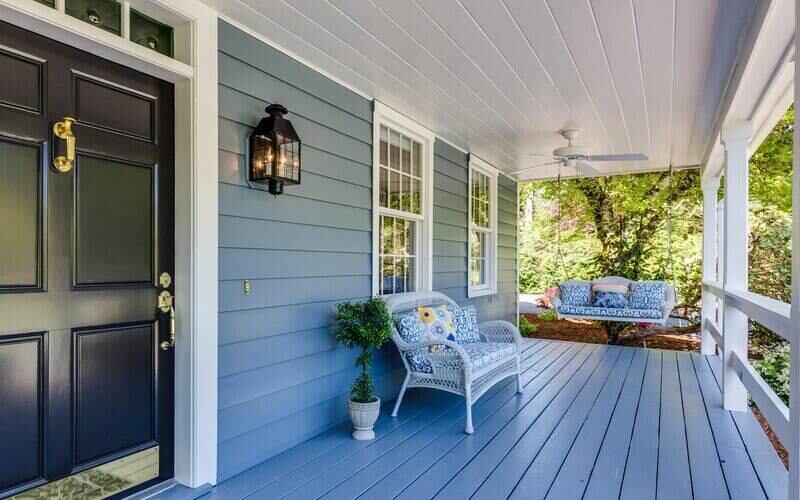Much has been said about Australia’s property boom, with house prices surging more than 20% over the past 12 months to reach a total value of nearly $10 trillion nationwide.
The tables now appear to be turning as capital city and national growth rates idle, with the focus shifting to the emerging slowdown of the property market in the face of rising interest rates.
Recently, CoreLogic head of research Eliza Owen said high-end and inner-city areas emerged as prominent markets to record dwelling price falls.
"It is likely that slightly tighter lending conditions and higher average fixed rates are hitting the very top of housing markets first," Ms Owen said.
Both Sydney and Melbourne have recorded price falls since the new year, with CoreLogic’s market mapper tool noting of the 734 markets to record price falls over the past quarter, 354 were in Sydney, and 303 were in Melbourne.
AMP Capital Chief Economist Shane Oliver said monthly capital city and national price growth peaked in March last year at 2.8% and has trended down to just 0.3% for capital cities in March this year.
“Average home price growth this year is expected to be around 1% and we expect a 5-10% decline in average prices in 2023,” Mr Oliver said.
“Top to bottom the fall in prices into 2024 is likely to be around 10 to 15%, which would take average prices back to the levels of March/April last year.
“Sydney and Melbourne look like they have already peaked, and are likely to see falls at the high end of the range, but Brisbane, Adelaide, Perth and Darwin and regional areas are less constrained by poor affordability and are likely to see shallower falls.
“The negative wealth effect from falling home prices should help limit how much the RBA raises rates.”
Interest rate rises driving property downswing
Mr Oliver believes the property slowdown appears to be starting earlier due to the timing of RBA rate hikes this cycle.
"This reflects the bigger role ultra-low fixed rate mortgage lending played this time around in driving the boom," he said.
“Normally fixed rate lending was around 15% of new home lending, but over the last 18 months or so it was around 40% as borrowers took advantage of sub 2% fixed mortgage rates.
“Now fixed rates are up sharply which is taking the edge of new buyer demand well ahead of RBA hikes."
Recent RBA data revealed many fixed-term home loan rates are now higher than they were pre-pandemic.
Chad Hoy Poy, National Lending Manager at non-bank lender WLTH, said the gulf between variable and fixed rates is growing.
"Currently, some of the big-four's three-year fixed rates sit in the low to mid 4% range, yet you can still get 80% variable rates around 2.09% which means these variable rates would need to increase by around 2% before the rate became equal to a current three-year fixed," Mr Hoy Poy told Savings.com.au.
"Home buyers locking in a rate now might find they are just locking in the expected increases over the next 18-24 months."
Recent RBA analysis suggests most households are well placed to manage higher loan payments with many variable rate mortgage holders already paying in excess of the minimum.
What does this mean for the economy?
Mr Oliver believes a downturn of the housing market will affect the economy through negative wealth effects on consumer spending and reduce the rate of housing construction.
The negative wealth effect in simple terms means as house prices fall, overall wealth falls, meaning consumers feel poorer and ultimately spend less.
“The former was a significant drag on the economy in the 2017-19 period when a 10% fall in average home prices contributed to a significant slowing in consumer spending,” Mr Oliver said.
“In a way the negative wealth effect of falling home prices means that the slowing housing cycle will do some of the RBA’s work for it, which means there is a good chance that it will pause tightening next year (at around 1.5% for the cash rate) – which in turn should limit the fall in house prices to 10 to 15%.
"The RBA knows that current high household debt levels compared to the past mean that the household sector is more sensitive to higher rates and therefore it won’t need to raise rates as much as in the past to cool spending and, hence, inflation.
"So [the RBA] won’t be on autopilot mindlessly hiking and crashing the property market and economy in the process."
Mr Hoy Poy believes that once house prices dip further, there will be a window of opportunity open for first home buyers that can service increased mortgage repayments but have delayed entering the market due to deposit requirements or perceived instability.
“Everyone needs to understand their own ability to meet repayments while remaining comfortable with increasing rates and look for a competitive rate and a loan that offers the features they need,” he said.
Advertisement
Buying a home or looking to refinance? The table below features home loans with some of the lowest interest rates on the market for owner occupiers.
| Lender | Home Loan | Interest Rate | Comparison Rate* | Monthly Repayment | Repayment type | Rate Type | Offset | Redraw | Ongoing Fees | Upfront Fees | Max LVR | Lump Sum Repayment | Extra Repayments | Split Loan Option | Tags | Features | Link | Compare | Promoted Product | Disclosure |
|---|---|---|---|---|---|---|---|---|---|---|---|---|---|---|---|---|---|---|---|---|
5.54% p.a. | 5.58% p.a. | $2,852 | Principal & Interest | Variable | $0 | $530 | 90% |
| Promoted | Disclosure | ||||||||||
5.49% p.a. | 5.40% p.a. | $2,836 | Principal & Interest | Variable | $0 | $0 | 80% |
| Promoted | Disclosure | ||||||||||
5.64% p.a. | 5.89% p.a. | $2,883 | Principal & Interest | Variable | $250 | $250 | 60% |
| Promoted | Disclosure | ||||||||||
5.64% p.a. | 5.89% p.a. | $2,883 | Principal & Interest | Variable | $248 | $350 | 60% |
| Disclosure |
Image by iSaw Company via Pexels.

Ready, Set, Buy!
Learn everything you need to know about buying property – from choosing the right property and home loan, to the purchasing process, tips to save money and more!
With bonus Q&A sheet and Crossword!







 Harry O'Sullivan
Harry O'Sullivan

 Denise Raward
Denise Raward
 Rachel Horan
Rachel Horan


